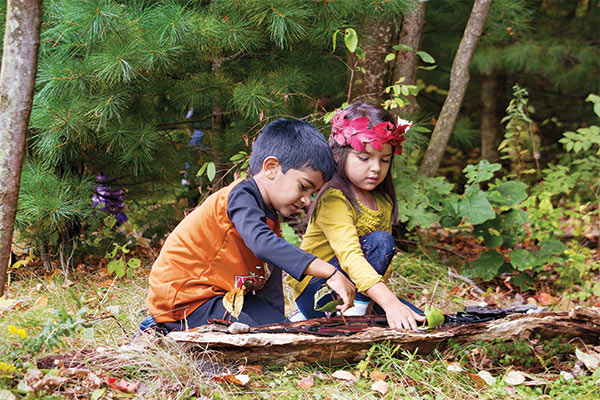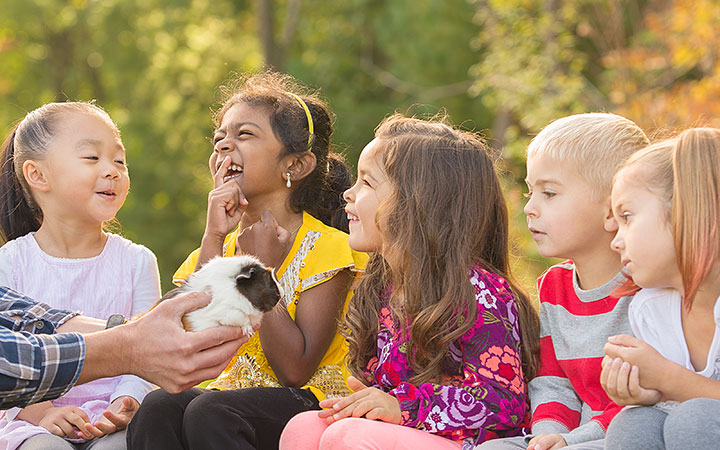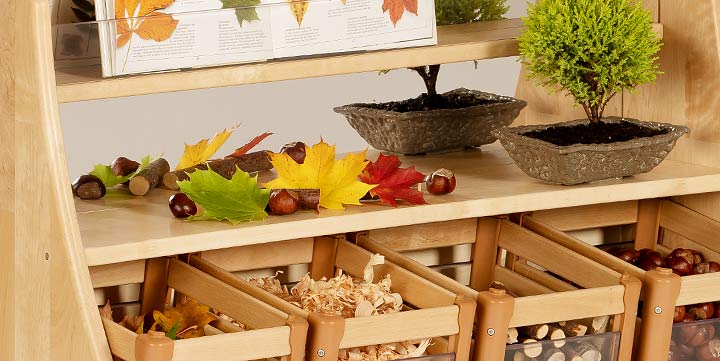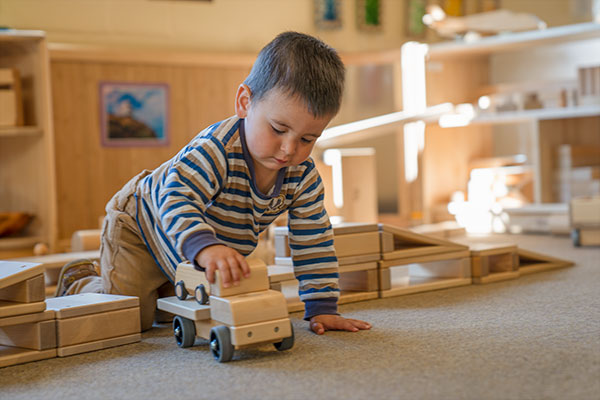The role of the early years teacher as a facilitator of learning
How a good teaching approach can strengthen a young child’s confidence
| August 2018This article is part of the series A model for living, focusing on eating, sleeping, playing and learning as main aspects of a child’s life.
In this final article of our Model for Living series we focus on learning, a much debated aspect of life in the early years. What are we doing to give children access to quality learning experiences, ensuring that they make stage-appropriate steps while allowing them freedom to inquire, explore, experiment and feel the true exhilaration of learning? The constraints imposed on early years practice and the race to reach certain targets lead us to plan for children to “discover the world already there” (Malaguzzi). This is necessary, yet the most important aspect of learning is to discover a world that might be there. The answer to this quandary lies in the determination of schools and settings to secure the understanding of how small children develop, how each unique child learns best, and how to create ideal conditions for learning.

“I think it’s an exaggeration, but there’s a lot of truth in saying that when you go to school, the trauma is that you must stop learning and you must now accept being taught.”
From the moment of birth children reflect, interact, and learn from experience, as the rapid fire of synaptic action creates connections in their brains and they respond, making meaning from each new encounter. Multi-dimensional in nature, children’s learning continues as a result of their innate desire to inquire, sometimes despite the imposition of adult direction on their voraciously creative and independent ideas. As educators, we are charged with the perennial challenge that designing and supporting creativity in learning “represents a miraculous coming together of the uninhibited energy of the child with its apparent opposite and enemy, the sense of order imposed on the disciplined adult intelligence.” (Norman Podhoretz)
The years from birth to five(+) are when children’s capacity for learning is greatest and they are able to transfer what they know into new contexts. This is how we humans discover truths and further our understanding of the world. A child’s innocent question may provoke an adult to think beyond what has “always” been known! As teachers and parents we have the privilege of watching children at play – when learning is most profound, when inquiry is driven by their intrinsic desire to pursue an idea and add to their personal “theory of everything”, and when genuine child-initiated learning can best be observed.
The battle cry “Me do it!” echoes from nursery to nursery across the globe, yet despite what neuroscience and perhaps even our own memories of joyful exploration tell us about learning through inquiry-based play, quality learning is still perceived to be that which is delivered to children, framed by Ministries of Education and informed, for some of us, by our own childhood experiences of a more formal approach to learning.
A concerning fact is the increased focus on “what must be taught” to children (who, incidentally, will become adults living in a world that we cannot yet imagine), which is beginning to squeeze the life out of the two most precious attributes of childhood: an insatiable curiosity and an endless capacity to learn. Such a natural desire to explore, experiment and investigate is the same driving force that led the wayward Elephant’s Child in Rudyard Kipling’s Just So Stories to almost lose his trunk to a crocodile, so determined was he to find out what the crocodile ate for dinner. As a result (so Kipling would have us believe), the hapless animal gained the extended proboscis that graces the features of all pachyderms today! Innocent, yet seriously scientific research such as that is evident in the practical application of inquiry that is fundamental to early learning.
The recent global focus on STEAM based learning (science, technology, engineering, arts and maths), endorses the most effective early years practice – with children’s natural drive for inquiry and practical exploration of the world at its core. Where inquiry-based learning is authentically child led, with the adult as a skilled facilitator, the learning is extended and fascination for learning sustained.

Responding to the following questions often engenders vigorous debate amongst practitioners as the various images of the child as held within your school or setting emerge. If these questions are given quality discussion time, the outcomes will support the design and development of the offered learning, the architecture of the learning space both as a physical entity and from a socio-emotional perspective, and will begin to determine the varying roles of adults necessary in supporting and partnering children in their learning:
- What is childhood?
- What is the image of the child held in your varying cultural contexts? (host country, teachers, parents, school, the community)
- How does a child learn?
- How do children learn in our school or setting?
- How do adults interact, engage and capture learning?
- How do adults honour children’s ideas and their different ways of being and of expressing themselves?
- In what ways are the children involved in making decisions that affect their learning?
- What are the constraints, perceived or real, that we place on children’s learning?
- What authentic choices do the children have in their learning?
- What can your children do? What are their strengths? What makes learning irresistible for them?
- How can our image of the child as a learner be made visible?
- How does the learning environment support, celebrate and challenge learning?
The final answer lies within a very simple concept. It is that as skilled and sensitive adults, we must meet our children at the very edge of their learning – noticing, listening, and responding joyfully to each new discovery and development. Being present in the moment is crucial, as it is at this time in a child’s life when the foundations of life-long learning are created; when, as Graeme Greene notes, “the door opens and lets the future in”. There are still those who believe that the real and most important learning does not begin until children make the transition out of the early years. Sadly, this is often the point at which a more formal approach to learning and teaching replaces the inquiry based, child-initiated approach that engendered the earliest passion for learning. Mitch Resnik, writing in Lifelong Kindergarten, speaks for most of us early childhood educators when he says: “I believe the rest of school (indeed, the rest of life) should become more like kindergarten.”
It is by following what we instinctively know is right for young children that we define and promote the essential parameters of early learning. By doing so, we may be able to capture that almost invisible moment of potential as the child responds to both the offered and their own imagined learning, supporting and extending their learning appropriately from where they are at. There really is no other place to start.
References
Gopnik, A., Meltzoff, A.N., Kuhl, P.K. (2001). The Scientist in the Crib: what early learning tells us about the mind . New York: Harper Perennial
Malaguzzi, L. (1920 -1994) The 100 Languages of Children (poem)
Resnik, M. (2017) Lifelong kindergarten: cultivating creativity through projects, passion, peers, and play . Cambridge, MA: MIT Press
Robinson, K. (2011) Out of our minds: learning to be creative. Oxford: Capstone







